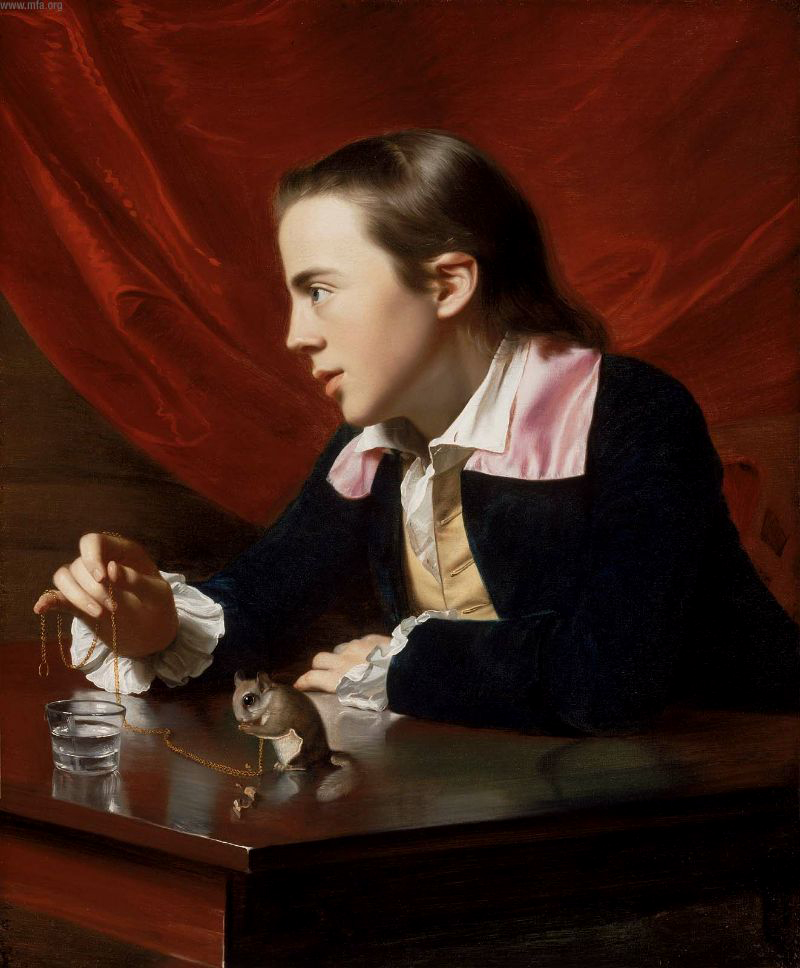During these stressful times, pets can be a powerful source of relaxation. According to a 2019/2020 survey, 67% of U.S. households own a pet; the most popular, unsurprisingly, are dogs, cats, birds, fish and small animals (rabbits, hamsters, guinea pigs, etc.). But did you ever dream of owning an otter? Or perhaps a flying squirrel? If yes, you have only to step into the 18th century to realize your dream:
From the diary of Philadelphian Elizabeth Drinker (1735-1807), who wrote in 1798 that her son William had “bought a flying squirrel in market, brought it home to please the children… I should have been better pleased had it remained in the woods.”
Also from Drinker’s diary, in 1799: “An account in one of the late papers of a natural curiosity, I think ’tis called, to be seen in Walnut Street; a fine little bird, a beautiful flying squirrel, a rattlesnake, and other animals, are living in the most amicable terms in a neat, strong box or cage. William went yesterday to see them; the bird was hopping about, ye squirrel laying asleep in a corner; 2 or 3 frogs in the box; the snake appeared torpid, but would stir when disturbed by a stick. The torpid situation of ye snake accounts to me for their friendly living together.”
From En Resa til Norra America, by Peter Kalm, a Swedish-Finnish explorer and naturalist who traveled through North America from 1748 -1751 come numerous observations of American pets:
“The gray and flying squirrels are so tamed by the boys that they sit on their shoulders and follow them everywhere.”
“Beavers have been tamed to such an extent that they have brought home what they caught by fishing to their masters. This is often the case with otters, of which I have seen some that were as tame as dogs, and followed their master wherever he went; if he went out in a boat the otter went with him, jumped into the water and after a while came up with a fish.”
“The American deer can likewise be tamed. A farmer in New Jersey had one in his possession, which he caught when it was very young; at present, it is so tame that in the daytime it runs into the woods for its food, and towards night returns home, frequently bringing a wild deer out of the woods, giving its master an opportunity to hunt at his very door.”
“The raccoon…can in time be made so tame as to run about the streets like a domestic animal; but it is impossible to make it give up its habit of stealing. In the dark it creeps to the poultry and kills a whole flock in one night. Sugar and other sweet things must be carefully hidden from it, for if chests and boxes are not locked up, it gets into them, eats the sugar, and after plunging into molasses licks it off its paws. The women therefore have every day some complaint against it, and for this reason many people would rather forbear the diversion which this ape-like animal affords.”
And we leave you with this, from Benjamin Franklin’s 1772 letter to Miss Georgiana Shipley, on the “loss of her American squirrel…”
“I lament with you most sincerely, the end of poor Mungo. Few squirrels were better accomplished; for he had had a good education, had travelled far, and seen much of the world…”

John Singleton Copley, A Boy with a Flying Squirrel (Henry Pelham), 1765
